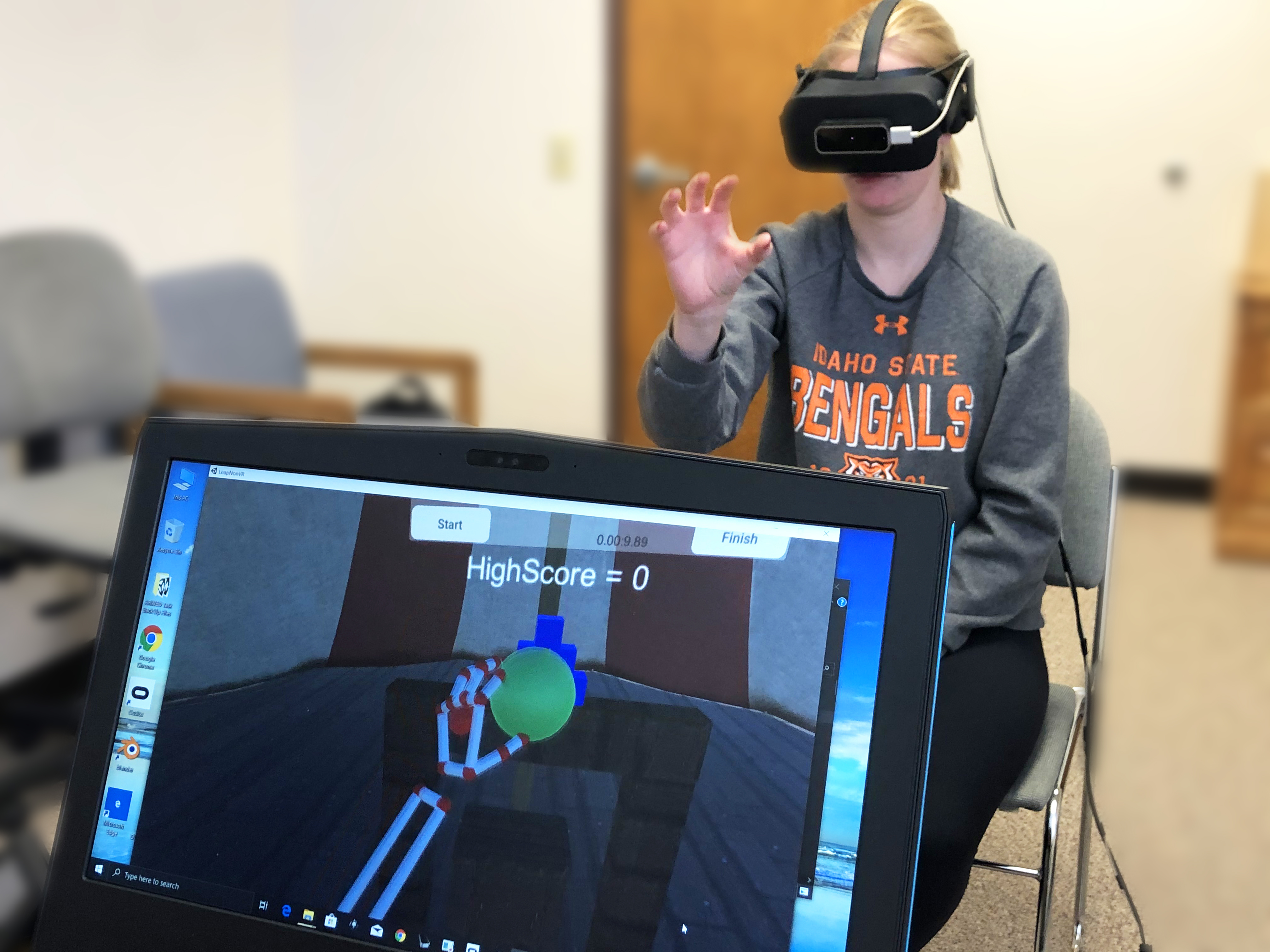Virtual reality's real health benefits

Some people may use virtual reality to escape into a world of imagination. For the people participating in a study conducted by Idaho State University’s Dr. Nancy Devine and Dr. Cindy Seiger, they imagine a place where both their arms are fully functioning.
The study’s equipment, which includes a specially designed Oculus Rift headset and sensors, was originally developed by faculty in the Idaho State University Mechanical Engineering Program in collaboration with faculty at Texas A & M and California State University, Fullerton, through a National Science Foundation grant.
Study organizers say people who may only have one fully-functioning arm could potentially benefit greatly if the results show improved movement using VR as part of their physical therapy treatment.
“Even just getting some utility out of the arm could change how they function in their everyday life and make them less dependent on somebody else helping them,” said Seiger, associate professor of physical therapy at ISU. “We’re looking at helping them with their daily activities for the rest of their life.”
The study is based on a mirror-box study, where participants use their functioning arm to complete tasks, but actually see their impaired arm.
“That has been shown to improve function as well as alter brain neuroplasticity,” said Devine, who is also an ISU associate professor of physical therapy. “So the idea here, with the virtual reality, is to no longer be limited by a box in what you can do. Now you can program potentially an unlimited number of real engaging tasks and still achieve that reflected image.”
Participants in the VR study, which is still accepting patients, need to be at least one year out of suffering a stroke, and continue to demonstrate impaired arm function.
Each participant is given a task-based intervention and a virtual intervention. But part of the study is to determine if a specific order of therapies is more helpful than another.
“We don’t tell our study participants anything other than the day and time to show up, and then we run the person through all the testing to demonstrate if any change has occurred,” Devine said.
The virtual tasks include throwing a ball, reaching through an aperture to grab an object without touching the sides, catching or blocking a ball shot out of a cannon, and stacking blocks.
One of the challenges Seiger and Devine face is measuring a participant’s starting ability.
“Each person’s normal is slightly different,” Seiger said. She added that they use the individual’s ability to determine a starting point from which they can measure success.
“I will say, from clinical observation, often when people only have one arm that works, that one arm is outrageously proficient,” Devine said. “They can do things you never think of.”
Both Devine and Seiger hope the results of this study provide ways for people with limited arm mobility to gain independence and functionality.
For more information about the study, or if you or someone you know might qualify to be a participant, contact Dr. Nancy Devine at devinanc@isu.edu.

